#mandir wahi banayenge
Explore tagged Tumblr posts
Text
Main Atal Hoon (2024): Movie Trailer review | TMF
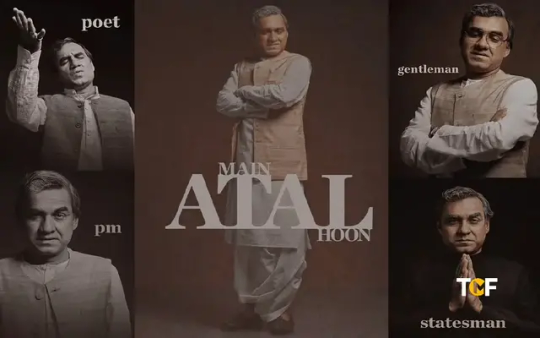
Main Atal Hoon (2024)
Main Atal Hoon is an upcoming biographical drama which unfolds the journey of Shri. Atal Bihari Vajpayee, who is an iconic figure in Indian politics. The movie delves into the multi-faceted persona of the former Prime Minister, and is all set to release in theaters on 19th January 24. Atal ji was a Prime Minister, a statesman, a visionary, a poet, a leader and a humanitarian. The first trailer of the movie was launched on 25 December 2023 on the 98th occasion of the birthday of Atal Bihari Vajpayee. Starting from childhood to adulthood, the journey of Atal Bihari Vajpayee from becoming a sevak of Rashtriya Swayamsevak Sangh (RSS) to becoming the most loved Prime Minister is shown in the trailer.
Shri Atal Bihari Vajpayee was the Prime Minister of India and held post for three times serving the country. He was a staunch patriotic and a dedicated politician and leader. He was awarded Bharat Ratna and Padma Vishnu.
मौत की उम्र क्या दो पल भी नहीं
जिंदगी सिलसिला आजकल की नहीं
मैं जी भर जिया, मैं मन से मरूँ
लौट कर आऊंगा, कूच से क्यों डरूं[1]
Main Atal Hoon-Trailer one
First trailer of Main Atal Hoon movie was dropped on 25th Dec 2023. The trailer says Atal Vajpayee as,”a man who fought many wars”,, also as a revolutionary, a rebel. And accounts of emergency, Ram Janmabhoomi issue, Pokhran Nuclear Test, Kargil War, Lahore bus yatra are also covered in the trailer. The trailer gives glimpses of significant occurrences of his life journey. Encounters with Pandit Deendayal Upadhyay, Akhil Bharatiya Jan Sangh, and his training at Rashtriya Swayamsevak Sangh, to his political journey. The powerful trailer follows the extraordinary life and political journey of Atal ji. The trailer is impactful on the accounts of Pankaj Tripathi playing the role of Atal Bihari Vajpayee. Multi-talented Pankaj Tripathi makes an impact with a strong persona and his effective and persuasive dialogue delivery draws us towards what the movie will entail.
Main Atal Hoon-Trailer two
Another trailer of the upcoming movie was dropped on 14th Jan 24. The trailer starts with a strong emotion about the state of the party where Pankaj Tripathi portraying Atal ji says; “The happiness and prosperity we imagine to have in life, cinema portrays it on the screen. We believe what we watch on screen. Outside cinema halls there is also one screen in the eyes of this country’s innocent citizens, whatever you show them they will believe it to be true. And whenever we try to do something good for the country, we are accused of being communal, and the Janata is being told and given an understanding that this Hindu party is dangerous for the country”.
The trailer gives glimpses of how Atal Bihari Vajpayee faced the criticism after Mahatma Gandhi’s Murder, the accused Godse’s association with RSS. Indian emergency chaos, The Babri Masjid destruction, violence and background slogans of ‘Mandir Wahi Banayenge’. There is similarly a glimpse of how Vajpayee launched a bus seva among India and Pakistan to maintain peace. The success of the Pokhran nuclear test, where Atal ji says, “answer to atom bomb is atom bomb”. The latter part of the trailer shows Vajpayee’s role during the Kargil War.
Main Atal Hoon movie crew
Vishal Bhanushali presents Main Atal Hoon, Directed by National Awardee Ravi Jadhav, who gave movies like Natsamrat and Natrang, is set to bring Atal Bihari Vajpayee on silver screen on 19th Jan 24. The first single titled "Desh Pehle" was released on 25 December 2023. The second single titled "Ram Dhun" was released on 4 January 2024. The third single titled "Hindu Tan-Man" was released on 11 January 2024.
The movie features Piyush Mishra, Paayal Kapoor Nair, Harshad Kumar, Raja Rameshkumar Sevak, Daya Shankar Pandey, Pramod Pathak, Prasanna Ketkar, Haresh Khatri, Paula McGlynn, and Gauri Sukhtankar.
Pankaj Tripathi; when talking about playing a role of late former Prime Minister Atal Bihari Vajpayee in one of the interviews said that while studying and reading Vajpayee; “I felt that Vajpayee was a poet and big personality, if we look at it from today’s perspective, I did not get the feeling of politician as we see we around, I read about him, it was enriching and educational”.
“'अटल' जी के व्यक्तित्व को पर्दे पर साकार करने के लिए मुझे संयम से मेरे व्यक्तिमत्व पर काम करना जरूरी है, यह मैं जानता हूँ। स्फूर्ति और मनोबल के आधार से मैं नई भूमिका को न्याय दे सकूंगा यह अटल विश्वास मुझे है।” ~ Pankaj Tripathi.
The Media Flair provides Political Consultancy, Political Campaign Management and Digital Marketing services. To know more about our services, visit The Media Flair.
[1] This moving poem on death was penned by Shri. Atal Bihari Vajpayee.
#main atal hoon#main atal hoon movie#atal bihari vajpayee movie#pankaj tripathi upcoming movie#Main Atal Hoon (2024)
0 notes
Photo
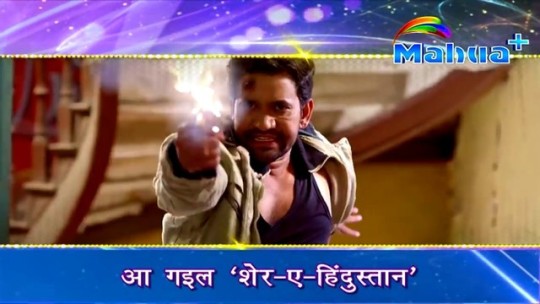
SHER E HINDUSTAN BHOJPURI MOVIE 2019 || शेर-ए- हिंदुस्तान ||NIRAHUA ||ENTERTAINMENT NEWS || MAHUA+ SHER E HINDUSTAN BHOJPURI MOVIE 2019 || शेर-ए- हिंदुस्तान ||NIRAHUA ||ENTERTAINMENT NEWS || MAHUA+
#aadishakti films#bhojpuri gana#choy choy bhojpuri#hit bhojpuri film#khesari lal hit songs#mahua plus#mahua tv#mandir wahi banayenge#nirahua#nirahua amarpali ka ganan#nirahua choy choy#nirahua film 2019#nirahua hindustani#nirahua web series 1#palang kare choy choy#pawan singh#pawan singh hit songs#SHER E HINDUSTAN | OFFICIAL TRAILER | DINESH LAL YADAV#sher singh#shere-e-hindustan#wave music bhojpuri#worldwide records bhojpuri#शेर-ए-हिन्दुस्तान
0 notes
Text
ishqbaaz 08.11.18 lb
oh ho dadi's finally gotten the energy to get outta bed.
omkara with the 'shivaay sab theek kar dega' mantra. been a while since we heard that shit.
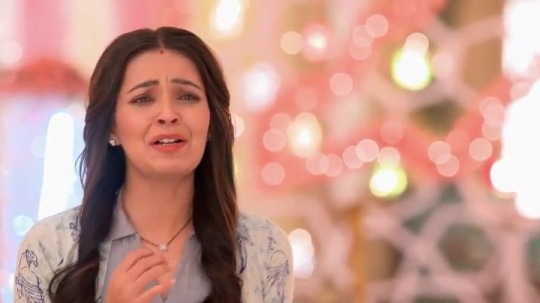

lmao bhavya asking rudra “aap theek hai na” when he's sporting some pretty sizable bruises on his face.


yeah i still don't buy bhavya being into this dude romantically. i say she married him just to get into the fam and score the cool jeths and bhabhis that she obviously loves more than her own husband.
can't believe they're making him all cutesy and shit after getting kidnapped for not paying his bookie on time. kuch toh sharam kar nalaayak.

“itni maar khaayi hai, filmon ka bhoot nahi uthra. satte ka bhoot uthra??”
(silent implication: nahi toh bata de, you have two older brothers and at least one bhaabi willing to beat it outta you.)


pft. inhi logon ke laad-pyaar ne bigaada hua hai iss manhoos ko. phenti dene ke bajaay gale laga rahein hai.
give him to nani, i say. i know she's not HIS nani, but still, she'll sort him out.
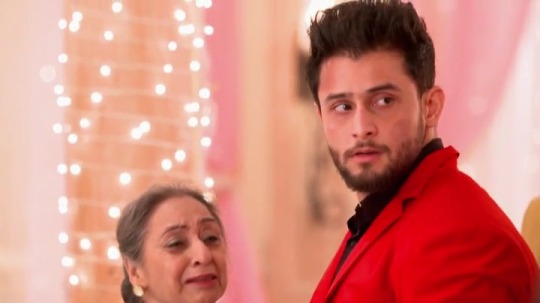
“agar shivaay....”

ah my heart, it actually hurts him so muchhhhh to hear rudra call him by name. fuck meeeee.

“... bhaiyya nahi hote...”

he's so emosh. and now i'm emosh.
(i'm just having an emosh day. just watched koode and it wrecked meeeeee.)
LMAO NOW NANI'S LIKE MAINE KAHA THA SHIVAAY SAB THEEK KAR DEGA. LOL NANI PLS, ANIKA WAS THE ONE WHO SAID THAT, NOT YOU.
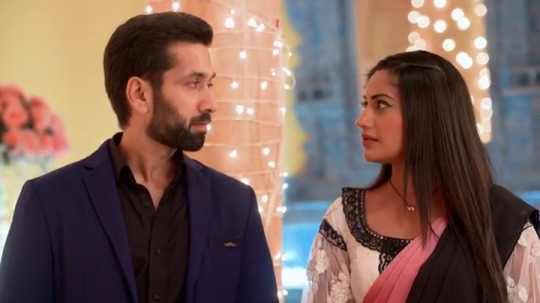

yeh dono kahaan chale?





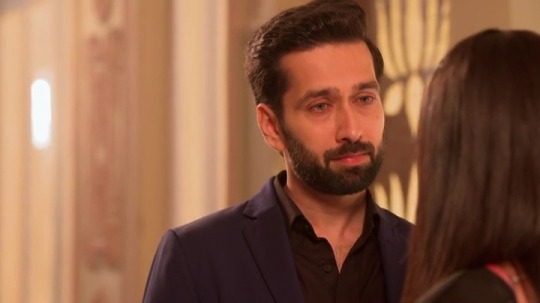




YOU DUMBFUCK IDIOT, IF YOU REALISE ALL THIS THEN WHY THE FUCK ARE YOU TRYING TO GET RID OF HER LORDDDDDDDDDDD. YOU CAN'T BOTH MAKE THE PUPPY EYES AT HER AND ALSO DRIVE HER AWAY YOU JUST CAN NOTTTTTT ALSKFJLSDJLJFLDSKDFKJ

oh suddenly prinku's all about her brother now. amazing what 4 days of sobriety can do.

lmao all i can think of is the adorable BTS mansi had posted of shrenu bursting into giggles after blowing the conch and having no sound come out.
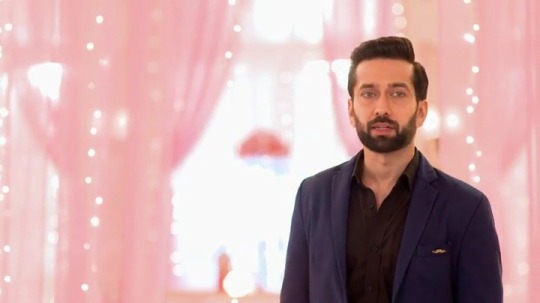

shivaay and his version of 'mandir wahi banayenge'. pffffffffft.
prinku looks happy, but gauri does not? what's the deal?
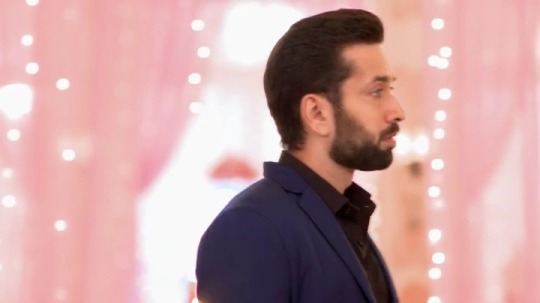


lakeer is making things awk for everyone.
aur nahi toh kya. that damn lakeer doesn't even really work. the kitchen and dining room are on omRu's side and shivika are forever there. this mandir itself is on the omRu side of the house. ainvayi har room ke beech beech mein lakeer kheechi hui hai. kuch bhi bakchodi.




“aaja.”
asalkjdslakdjasldkjs weeping.


he looks to rudra too, for permission. who gives him the tiniest nod.



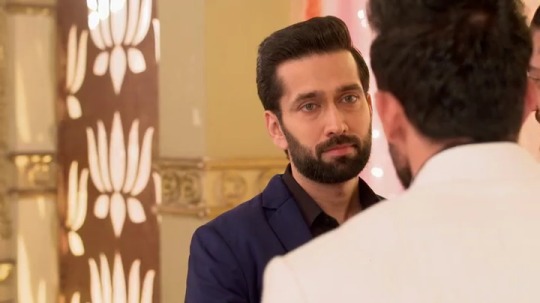


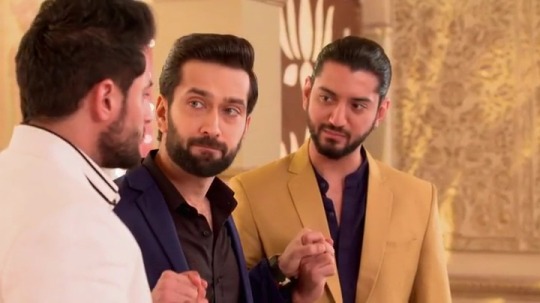


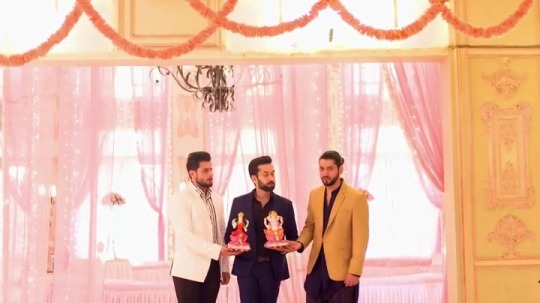
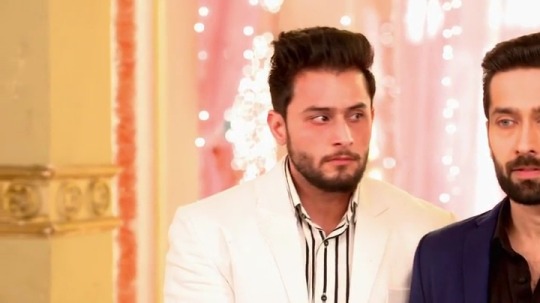





i love it. i love all of it. how they had rudra step over to shivaay's side. how shivaay's straddling both sides. rudra looking at shivaay, as if he's seeing him for the first time. shivaay looking over at him and rudra quickly churaofying aankh. all of it...

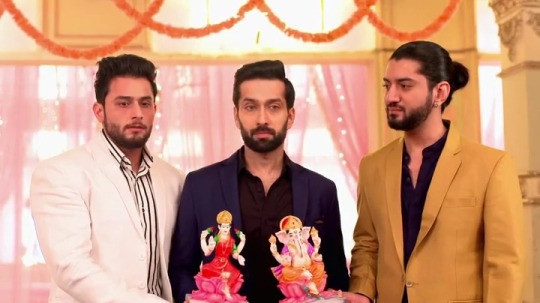
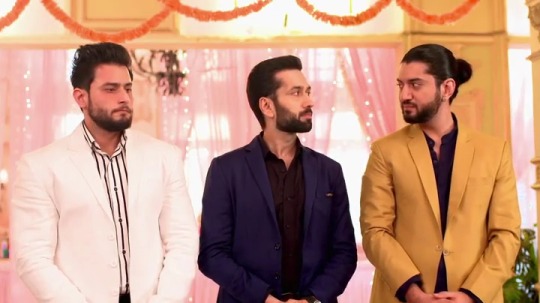
this will always be the first and foremost love story of this show for me. these three brothers. everything else comes secondary. my three boys.

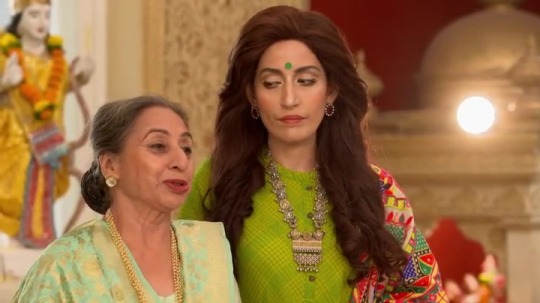
roop's bitch face lol. get fucked, bua.

rudra just can't stop looking at shivaay. because he's gained him back after so long. so so long. my heartttttttttt.



behen darwaaze ko sajaa rahi hai ya khud ko?


lol look at him looking at her with his head cocked, like a confused puppy.

lmao aankhon ki gustaakhiyan.ofc.

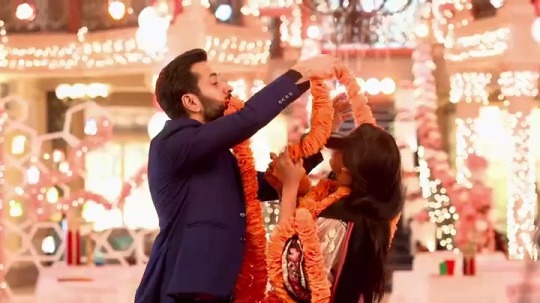
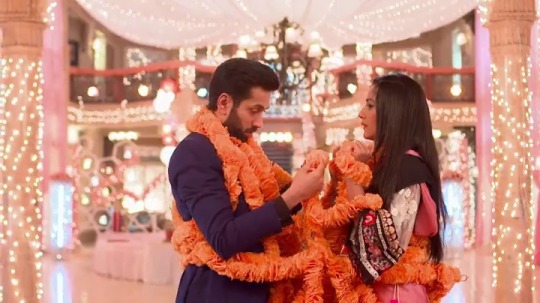
......... shivaay, how is this helpful at all?

i like how she's not all GASP OMG HOTNESS, but instead completely done with him.
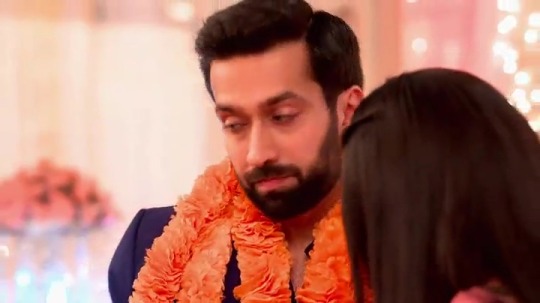
he too is like not very romanchick. yet. i'm sure he'll get in mood in 3... 2... 1...

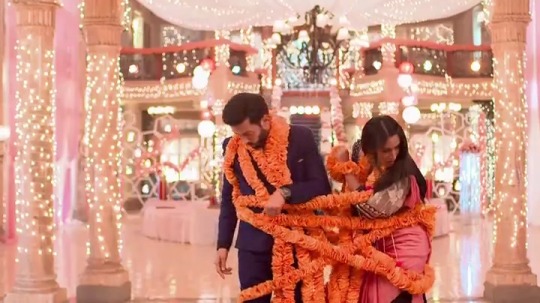






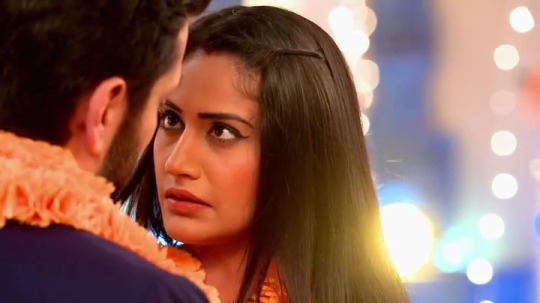
yup. nooooooooooo issues sliding his arm around her waist and drawing her closer and giving her the ‘fuck me’ eyes....
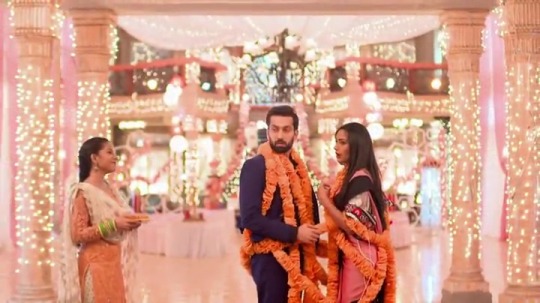
snort. twinkle ko bada mazaa aata hai, watching her otp play out fanfiction in front of her.
oh suddenly he's like oh i shouldn't be thinking with my downstairs brain.


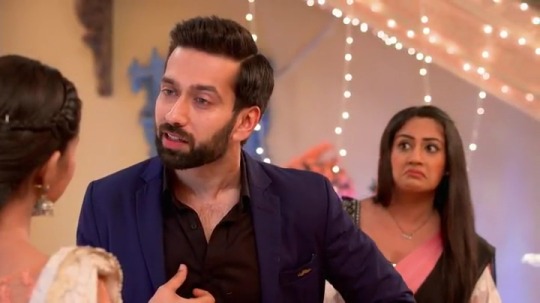

lmao twinkle/anika's bitch who are you fooling with this bs smiles.




SHIVAAY GESTURING AT TWINKLE AND HER BEING ADORABLY CLUELESS IS MY FAVT THING THIS WEEK. EVERY SCENE HE'S TRYING SO HARD AND SHE'S JUST LIKE ¯\_(ツ)_/¯ ¯\_(ツ)_/¯ ¯\_(ツ)_/¯


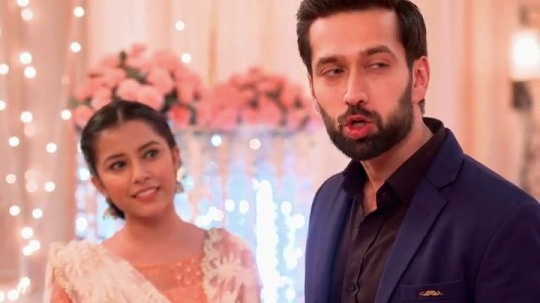
god i really love twinkle’s face as she watches him dig his own grave.




“ladoo MAINE banaaye hain.”
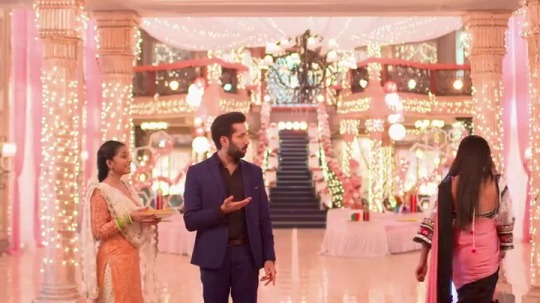
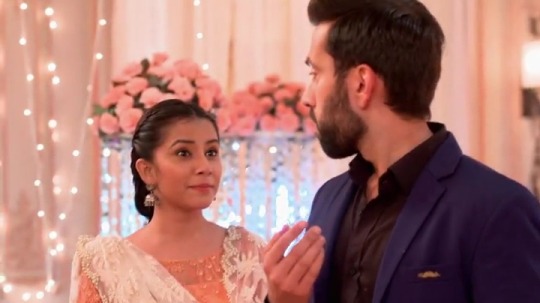
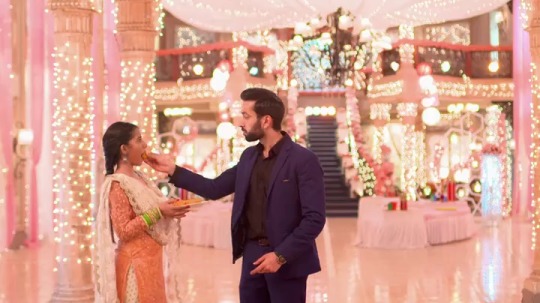

snort. is bechaari pe kyun bhadak raha hai. bewakoof insaan.



girl love girl love girl love.
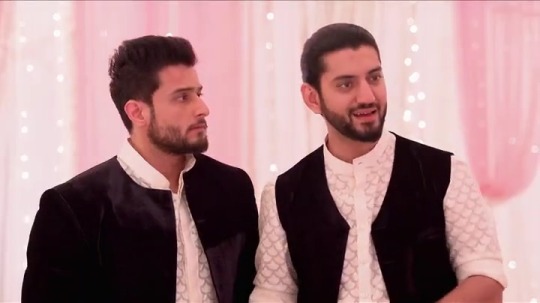
“excuse me, hum bhi taiyyar hue hain, aur humein tareef se allergy nahi hai.”
bitch putting on one kurta and vest is not “taiyyaar hona”. tuney bas kapde badlein hain. gtfo. come back when you’ve put some damn effort.

eh. not so impressed by his outfit. rudra’s outfit is better. kinda sloppy in how he’s wearing it, but i like the outfit itself better.
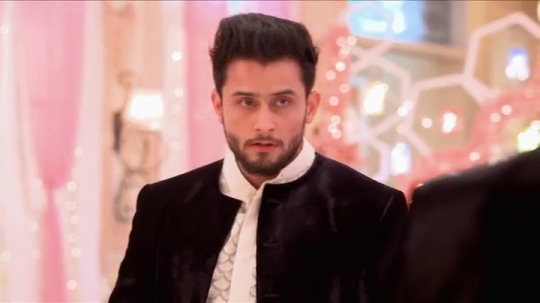


rudra mandaraaoing near bhaiyya, unable to get the words out. he truly is a little childdddddddddd.

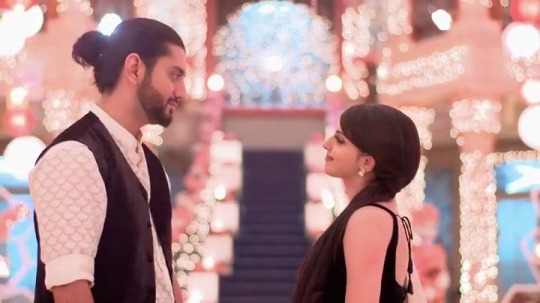


jodiyaan assemble.
ugh rikara why so fucken pretty kill meeeeee.
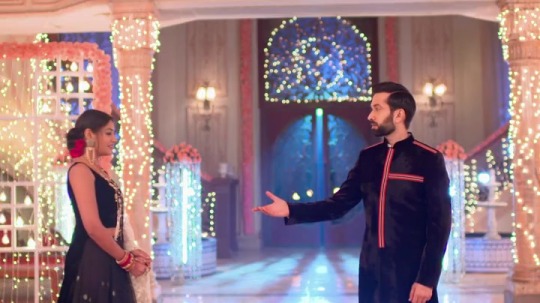
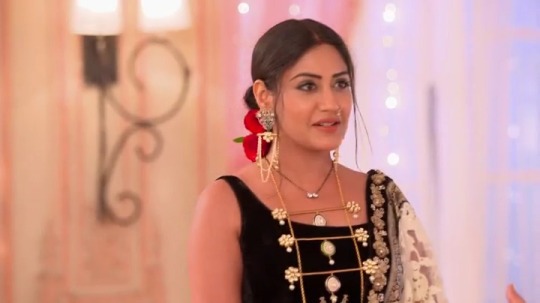
this fucker will take twinkle, won't he? WON'T HE??????? THIS FUCKING FUCK.


NANIIIIIIII NOOOOOOOOOOOOOOOO.






ALDSKJFLSFJLDLKJDLSFJDSLF SHIVAAY IMMA MURDER YOU I SWEAR TO GODDDDDDDDDDDDDDDDDDDDDDDDDDDDDDDD. RUDRA IF THERE'S EVER A TIME TO BEAT THE FUCK OUT OF HIM, IT'S NOW. RIGHT NOW. DO IT.

om's U WOT M8 face at this fuckery.
NANI U NEED TO STOP GOING ALONG WITH HIM ON THIS FUCKERY AND START BEATING SENSE INTO HIS DUMB ASS.
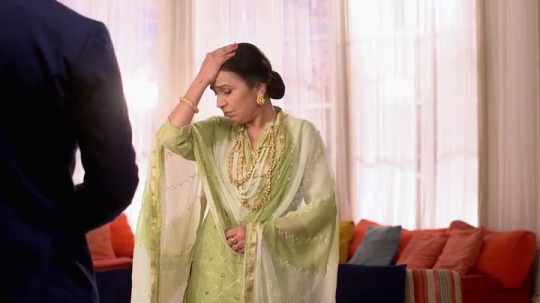


nani pls. don't act overly like you're being forced and all. all you need to do is refuse. or say yes and then at last minute not do anything. you don't have to actively aid him in fucking with her like this. dono ko paap lagega. uska toh list already bharaa hua hai, aap bhi narak jaayengi.
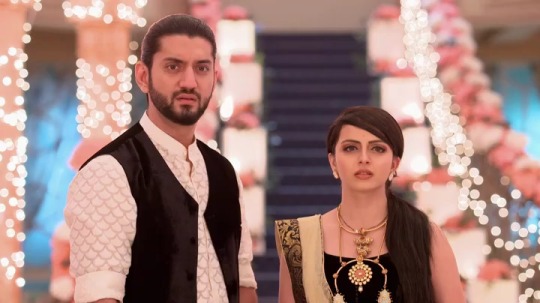


om just can't believe the amount of chutiyaapa that's going on.


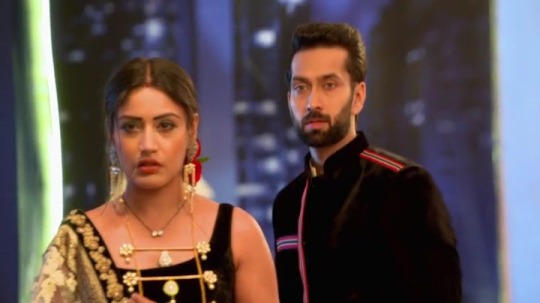

AB PEECHE PEECHE KYUN AAYA HAI TU HEIN????????? JAA POOJA KAR NA USKE SAATH. MANHOOS.





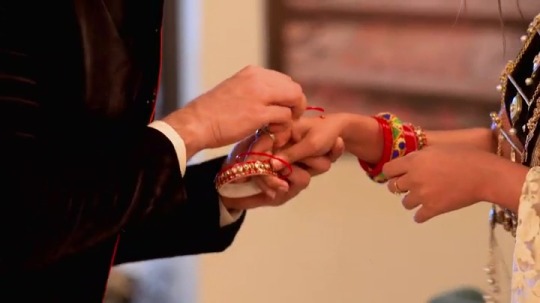
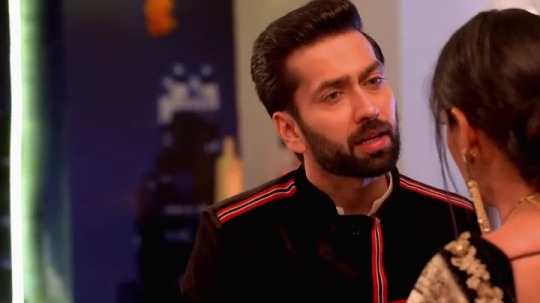



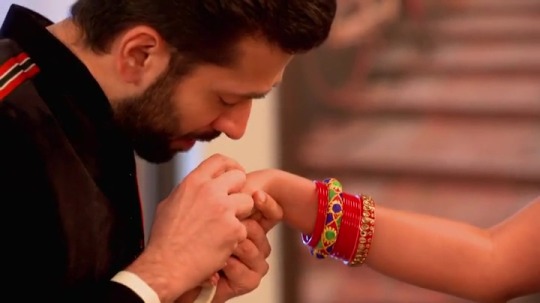

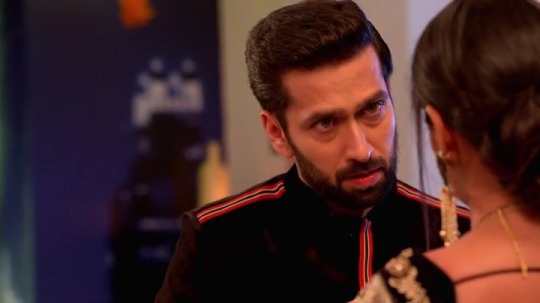
“haath pe lagi chot ki aapko itni fikr hai, lekin jo chot aap roz mere dil ko de rahe hain, uska kya?”

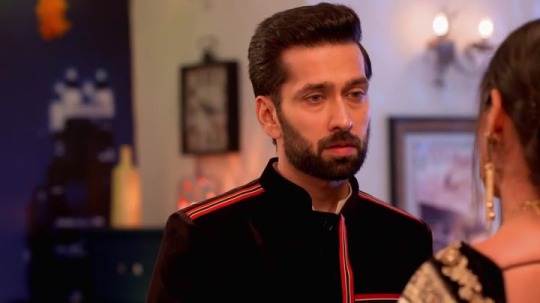

“main jaanti hoon ki aap jo kuch bhi kar rahein hain, meri khushi, meri bhalaai ke liye kar rahein hain. is liye aapke har stunt ko main mazaak mein le leti hoon. lekin bardaasht ki bhi koi hadh hoti hai.”
TELL HIM, GIRL. TELL HIM.
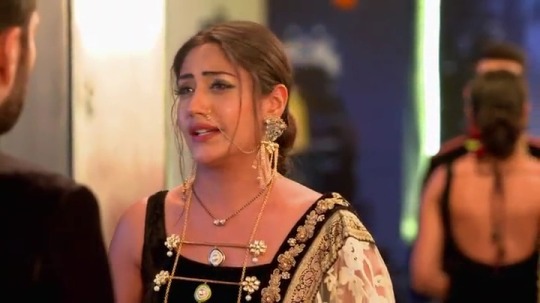

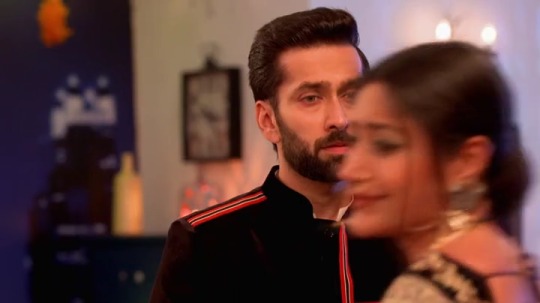
“roz aap mera dil dukhaate hain, lekin aaj, aaj aapne mera dil tod diya.”
fuck. my heart. my poor girl. this stupid son of a bitch. i hate him. i hate him so much.

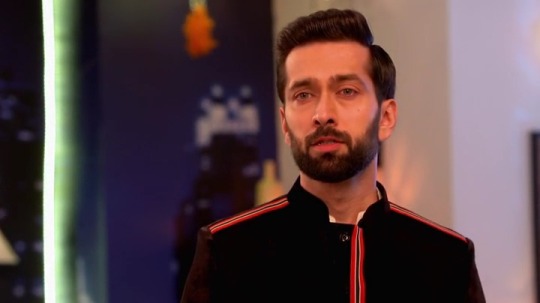




YEAH I DON'T GIVE ONE (1) SINGLE FUCK ABOUT YOUR “INTENTIONS” AND “MOTIVATIONS” AND HOW MUCH MANPAIN *YOU'RE* UNDERGOING HURTING HER. ALL OF THIS BULLSHIT IS UNNECESSARY. FUCKING UNNECESSARY. LITERALLY FUCK OUTTA HERE SHIVAAY.

12 notes
·
View notes
Text
Ayodhya Case: India’s longest running Dispute
This article is written by Gauraw Kumar, from BVP-New Law College, Pune. In this article, he covers the facts, historical background, issues raised and the Judgement of an important case “M Siddiq (D) Thr Lrs v. Mahant Suresh Das & Ors.”, popularly known as “Ayodhya Dispute case”.
Introduction
India is a unique country which is adopting advancement rapidly and is also known for its diversity at the same time. In India, people have strong feelings and respect for their religion and religious ceremonies. It is good as well as bad for them also. Normally, we think that we should be loyal towards our god, respect our religion. But at the same time, politicians take advantage of these feelings. They use to connect their policy and agenda with religion and try to influence people to vote. Politicians use the concept of “Divide and rule” by influencing and manipulating people with the help of their religious feelings and emotions towards their god. We have also heard about religious violence. It is not a hidden phenomenon in a country like India. India has adopted the principle of secularism in the Constitution in order to preserve, protect and maintain the culture and traditions of all the religions. Notwithstanding, varying mindsets and different beliefs of people leads to disharmony in the society which further leads to violence and disturbance. Some disputes are very prolonged which require trial in the court of law. One such dispute arose in the case of M Siddiq (D) Thr Lrs v. Mahant Suresh Das & Ors, popularly known as Ayodhya Dispute Case. You may also hear the slogan and song “Mandir wahi banayenge” in your society. Now we will try to discuss history, background, issues raised and verdict passed in this case.
M Siddiq (D) Thr Lrs v. Mahant Suresh Das & Ors
This case is popularly known by the name of “Ayodhya Dispute Case”. This case witnessed all the Prime Minister of Independent India. This dispute is a social, religious, historical and political debate in India which centred on a plot of land in the city of Ayodhya, Uttar Pradesh. This was a very prolonged case and finally, the Supreme Court passed a verdict for case on dated 9th November 2019.
Facts of the Case
It was the story of an Ayodhya city which cohabits both, Hindu (who claim birthplace of Lord Rama) and Muslim (who see it as a city which locates Babri Mosque which was built by first Mughal emperor, Babur in 1528). First religious violence in Ayodhya occurred in the year of 1850 over a nearby mosque at Hanuman Garhi. In this process, the Babri Mosque was attacked by Hindus. Local Hindus always demand occasionally for the possession of the land where Babri mosque was established and they should be allowed to build a temple on that land. They believed that the Babri mosque was built by breaking a Hindu Temple. But, their demand was always refused by the Colonial Government. On 22nd December 1949, an offshoot of Hindu Mahasabha called Akhil Bharatiya Ramayana Mahasabha (ABRM) organised 9 days continuous recitation of Ramcharitmanas. At the end of which, Hindu activists broke into the mosque and established idols of Rama and Sita inside. Jawaharlal Nehru ordered to remove idols but the same was refused by a local official, K.K.K. Nair (known for his Hindu nationalist connections), claiming it would lead to communal riots. The Police locked the gates and entry was banned for both, Hindu as well as Muslim. Priests were allowed to enter for daily worship as idols were present inside and Mosque had been converted into a de facto temple. Both Sunni Waqf Board and AMRM filed a civil suit in local court claiming their religious rights on site.
The legal battle over Ayodhya began in 1950 when a petition was first filed by Gopal Singh Visharad, who was refused entry. He was Ayodhya secretary of the Hindu Mahasabha, an organization formed to oppose the secular principle of the Congress party. The court dragged on the issue for almost a decade and in 1959 the Nirmohi Akhara filed another complaint claiming that the area should be in their possession. In response to the above-mentioned lawsuits, the Sunni Central Waqf Council filed a counter-request in 1961. The Council was established by Indian law to protect and preserve Muslim religious and cultural sites.
Click Above
Issues raised
The issue of this case revolved around the possession of land traditionally regarded as the birthplace of Lord Rama and the history of Babri Mosque.
One of the major issues of this case was:-
Whether a previous Hindu temple was demolished or modified to construct a mosque by Babur?
Written submission of parties to the case
After the long hearing of 14 days, the Supreme Court has given 3 days to all the parties of this case to give written submission and clear what are they actually praying. Following are the summary of written statements by different parties to this case:-
Nirmohi Akhara
In the event that the verdict comes in favour of one of the Hindu parties, the Akhara should retain the right to serve the deity.
The authorization to build a Ram temple on the disputed site and Nirmohi Akhara should be authorized to manage the premises once the temple is built.
If the court decides to confirm the verdict of the High Court of Allahabad in 2010 and the Muslim parties declare that they will not do any construction on the disputed site, the court should ask the Muslim parties to give their share of the land to the Hindu parties. on a long-term lease so that a large Ram temple can be built. (The verdict of the High Court of Allahabad had divided the disputed land into three parts: the Sunni Waqf Council, the Nirmohi Akhara and Ram Lalla)
The court should order the government to provide land to the Muslim side to build a mosque outside the conflict area.
Ram Lalla Virajman
The written submission on behalf of Ram Lalla Virajman says that the court should give all of the lands in dispute to Ram Lalla.
The statement stated that no part of the disputed land should be given to the Nirmohi Akhara or the Muslim parties.
Ram Janambhoomi Punar Sudhar Samiti
Only a Ram temple should be allowed to be built on the disputed site in Ayodhya.
Once the temple is built, a trust must be formed to manage it.
Gopal Singh Visharad
Gopal Singh Visharad, whose ancestors would have performed rituals on the temple site for centuries, argued that it is his constitutional right to offer prayers to Ram Janmabhoomi.
His statement said that there should be no compromise in the Ram Janmabhoomi case.
Sunni Waqf Board
The Commission has stated that it wishes to obtain the same remedy as that invoked at the hearings. During the hearings, Commission counsel, Rajeev Dhawan, requested that the Babri Masjid regain its form before being destroyed on December 6, 1992.
Hindu Mahasabha
The Supreme Court is expected to form a trust to oversee the management of the Ram temple to be built on the disputed site in Ayodhya.
The Supreme Court should appoint an administrator to deal with this trust.
Shia Waqf Board
During their relief casting before the High Court of Allahabad, they said that the Muslim parties should give up their claim on the disputed land and hand it over to the Hindu parties to build a Ram temple.
In a written submission, the Shia Waqf board of directors said that a Ram temple should be built on the disputed site in Ayodhya.
He stated that the Waqf Shiite council is the lawful owner of the disputed land, not the Waqf Sunni council.
The land that was given to the Sunni Waqf Council in the High Court order should now be given to the Hindu parties.
Judgement
The bench of five judges of the Supreme Court heard the litigation cases on the title from August to October 2019. On 9th November 2019, the Supreme Court, led by Chief Justice Ranjan Gogoi, announced its verdict; he quashed the previous ruling and ruled that the land belonged to the government on the basis of the tax records. He further ordered that the land be turned over to a trust for the construction of the Hindu temple. He also ordered the government to donate another five-acre piece of land to the Waqf Sunni Council to build the mosque.
Following are the top ten points that were highlighted in the Judgement of this case:-
The Supreme Court granted the entire 2.77 acres of disputed land in Ayodhya to the deity Ram Lalla.
The Supreme Court ordered the government of Central and Uttar Pradesh to allocate 5-acre alternative land to Muslims in a prominent location to build a mosque.
The court asked the Center to consider giving some sort of representation to Nirmohi Akhara for setting up a trust. Nirmohi Akhara was the third party to the Ayodhya conflict.
The Supreme Court rejected the plea of Nirmohi Akhara, who sought to control all of the disputed lands, claiming that it was its custodian.
The Supreme Court ordered the Union government to create a trust in 3 months for the construction of the Ram Mandir on the disputed site where Babri Masjid was demolished in 1992.
The Supreme Court said that the structure below the disputed site in Ayodhya was not an Islamic structure, but the Assistant Sub-Inspector (ASI) did not establish whether a temple was demolished to build a mosque.
The court also declared that the Hindus regard the disputed site as the birthplace of Lord Ram while the Muslims also say the same thing about the site of Babri Masjid.
The court also declared that the Hindus’ belief that Lord Rama was born on the disputed site where Babri Masjid was once, cannot be challenged.
The Supreme Court also declared that the 1992 demolition of the 16th-century Babri Masjid mosque was a violation of the law.
While reading its judgment, the Supreme Court declared that the UP’s Waqf Central Sunni Council had not established its cause in the Ayodhya dispute and that the Hindus had established that they were in possession of the outer courtyard of the site in dispute.
A brief timeline from the occurrence of the dispute to the end of the dispute
6th December 1992:- The Babri mosque was demolished by a gathering of nearly 200,000 Karsevaks. Community riots across India followed.
16th December 1992:- Ten days after the demolition, the Congressional government at the Center, led by PV Narasimha Rao, set up a commission of inquiry under the leadership of Judge Liberhan.
6th August 2019:- The 5-judge constitutional bench, headed by Chief Justice Ranjan Gogoi, of the Supreme Court, began the final hearing on the case.
16th October 2019:- The final hearing before the Supreme Court ends. The bench reserved the final judgment. The court gave the parties to the conflict three days to file written notes on the “shaping of the remedy” or on the issues on which the court must decide.
9th November 2019:- Final judgment rendered. The Supreme Court ordered the surrender of the land to a trust for the construction of the Temple of Ram. It also ordered the government to donate 5 acres of land within the city limits of Ayodhya to the Sunni Waqf Council to build a mosque.
12th December 2019:- All petitions for review of the verdict dismissed by the Supreme Court.
Conclusion
This case is important because this is a prolonged case in the history of the Indian Judiciary and witnessed all the Prime Minister of India, from Jawaharlal Nehru to Narendra Modi. Finally, this dispute was resolved on dated 9th November 2019. In this Judgement, the Supreme Court tried to approach this case in a harmonious way and tried to establish a balance between both the religion. The Supreme Court granted the entire 2.77 acres of disputed land in Ayodhya to the deity Ram Lalla. The Supreme Court ordered the government of Central and Uttar Pradesh to allocate 5-acre alternative land to Muslims in a prominent location to build a mosque.
According to me, we should focus on the real issue which led to the development of a country like poverty, unemployment, agriculture etc. We should not come in the religious emotions trap of politicians. Politicians distract us by raising these religious issues and use the concept of “Divide and rule” in order to win elections. This case is one of the examples because this dispute was a burning agenda in previous elections of Lok sabha.
LawSikho has created a telegram group for exchanging legal knowledge, referrals and various opportunities. You can click on this link and join:
https://t.me/joinchat/J_0YrBa4IBSHdpuTfQO_sA
Follow us on Instagram and subscribe to our YouTube channel for more amazing legal content.
The post Ayodhya Case: India’s longest running Dispute appeared first on iPleaders.
Ayodhya Case: India’s longest running Dispute published first on https://namechangers.tumblr.com/
0 notes
Text
Shikara Movie Review: Vidhu Vinod Chopra Tries To Do A Balancing Act But It's Lopsided

Shikara Movie Review: A poster of the film (courtesy vidhuvinodchoprafilms)Cast: Aadil Khan, SadiaDirector: Vidhu Vinod ChopraRating: 2.5 stars (out of 5)It goes without saying that it has usually been beyond the ambit of mainstream Bollywood to fully comprehend and encompass the multiple skeins that constitute the old, intractable Kashmir imbroglio. It is, therefore, not surprising at all that Shikara, intended to be an elegy to a lost paradise, falls short of its avowed goal. It tells the Kashmir story from the point of view of those that were forced to leave the Valley when militancy erupted there in the late 1980s. Inevitably, the film is limited in its scope. No matter how hard director Vidhu Vinod Chopra tries to do a balancing act, it cannot be anything but lopsided.Shikara is a love story set against the backdrop of the exodus but it floats largely in shallow waters and stays away from the muddied whirlpools that are inevitable when the unrest in the Valley has continued as long as it has. The film revolves around an idealistic couple who pines for their lost home without letting hate and distrust rob them of their humanity. They cling to the hope of returning some day to the land of their birth, reflecting the yearning of all victims of conflict, not just Kashmiri Pandits.It would be pertinent to question the timing of Shikara. Kashmir, where much of the action is set, has been under lockdown for several months now and the rights of the people of the Valley have been summarily curtailed. It redounds to Chopra's credit that the Hindu-Muslim binary at the heart of this fictionalized account "based on true events" isn't manipulated to overtly tar a whole group of people with the same brush although the film has a couple of defining moments where the them and us divide comes to the fore and determined the flow of the narrative.Shikara Movie Review: A still from the movieIn trying to pull of the tightrope walk, the screenplay takes recourse to sweeping means. We see grainy footage of Benazir Bhutto (on a black and white television set) addressing a rally and exhorting Kashmiris to fight for freedom. In another scene, news of an agreement between George Bush Sr. and Mikhail Gorbachev is flashed on TV. One character, in reaction to the second bit of news, scoffs at the idea of world peace. He blames the Americans for pumping arms into Afghanistan to help the Mujahideen fight the Russians and then diverting weapons to militants in Kashmir. Another says that politicians aren't interested in a lasting resolution in Kashmir, all they want is to win elections.That is about it. By pinning the blame for the rise of militancy on external geopolitical forces and on domestic politicians who thrive on fishing in troubled waters, Shikara ignores a local history of exploitation and suppression that extends back into the 19th century. But then Chopra recognizes the limits of a two-hour film and does not claim that he is presenting an exhaustive portrait of Kashmir in the run-up to, and in the aftermath of, the exodus of Pandits from the Valley.He filters the plight of a forcibly displaced community through the sieve of a tragic story that straddles three decades. Shikara, which the director has co-written with journalist Rahul Pandita and screenwriter Abhijat Joshi, glosses over the granular details and uses simple, broad strokes to trace the genesis and manifestations of the Kashmir conflagration.But in tracking the relationship between Shiv Kumar Dhar (Aaadil Khan), a poet and literature professor, and Shanti Sapru (Sadia), who meet by accident when they are roped in as impromptu extras during a Hindi film shoot in Kashmir in the mid-1980s. Love blossoms and, helped along by Shiv's bosom pal Lateef Lone (Faisal Simon), they marry before the end of the decade.Shikara Movie Review: A still from the movieWithin a year, the couple builds a house, which Shanti names Shikara because it was on a boat that the pair had consummated their love after their wedding night. But their stay in the new abode is short-lived. Trouble erupts for the Pandits and they are forced to flee.The second half of Shikara is set in a refugee camp in Jammu, where the pain of displacement takes its toll on the young and old alike. A sense of loss hangs heavy. An ageing Pandit refugee cannot stop himself from constantly pleading with anybody within earshot to be taken back to Kashmir: a snapshot of the psychological toll that the turn of events took on the older refugees.Shikara Movie Review: A still from the movieIn one scene, in 1992, a young boy leads a group in shouting "Mandir wahi banayenge", reflecting the changing political climate in the country and its influence on impressionable minds. Shiv steps in and tells the boy that a true leader does not divide, but unites. There is at the core of Shikara an attempt to exercise caution in the portrayal of an emotive, polarising theme.Yet, the predicament of Shiv and Shanti (which also was the name of the director's mother who was forced to leave her home in the Valley and could never return) is real and informed with sensitivity and lyricism. In the opening scene of the film itself, it is revealed that Shiv has been writing letters to a succession of US presidents for 28 years with a plea for help. This is an intriguing and original, if not entirely convincing, flight of fancy. Shiv's epistles are like his poems, dripping with optimism and an undying spirit of positivity.For a film that deals with people who have become refugees in their own country, Shikara is devoid of anger and bitterness. The two principal characters, unlike many of their ilk in the real world, have not allowed their despondency to push them in seeing the situation in black and white. They are befuddled and shocked all right but they aren't consumed by rage.Shot wonderfully well by Rangarajan Ramabadran, who crafts frames that are unfailingly evocative of both mood and place, Shikara oscillates between aching beauty and deep darkness as a tender, old world love story plays out in a fractured world.The casting lends authenticity to the depiction of the milieu - Sadia as Shanti and Aadil Khan as Shiv are real and completely believable although the manner in which the 30-year ageing process is captured is somewhat dodgy. Faisal Simon as Shiv's best friend and a Ranji Trophy cricketer who is radicalized as Kashmir sinks into fear and gloom, is effective too.Shikara is evasive on many crucial counts, but, judged on purely cinematic parameters, its strengths are noteworthy. Read the full article
#1trendingonyoutubenow#1trendingonyoutubetoday#1trendingsongonyoutube#1trendingworldwide#2trending#2trendingonyoutube#3trending#3trendingsongs#5trending#6ontrending#8ontrending#00strends#01trending#0gagtrending#0peratrendingnews#1trendinggame#1trendingintwitter#1trendingonfamousbirthdays#1trendingonyoutube#1trendingsong#1trendingvideoonyoutube#10trendingstories#2trendingnews#2trendingtopics#24/7trendingtwitter#3trendingbooks#3trendingstories#5trendingfishpreservation#5trendingnewsinthephilippines#5trendingtopics
0 notes
Text
Shikara Movie Review: Vidhu Vinod Chopra Tries To Do A Balancing Act But It's Lopsided
New Post has been published on https://apzweb.com/shikara-movie-review-vidhu-vinod-chopra-tries-to-do-a-balancing-act-but-its-lopsided/
Shikara Movie Review: Vidhu Vinod Chopra Tries To Do A Balancing Act But It's Lopsided


Shikara Movie Review: A poster of the film (courtesy vidhuvinodchoprafilms)
Cast: Aadil Khan, Sadia
Director: Vidhu Vinod Chopra
Rating: 2.5 stars (out of 5)
It goes without saying that it has usually been beyond the ambit of mainstream Bollywood to fully comprehend and encompass the multiple skeins that constitute the old, intractable Kashmir imbroglio. It is, therefore, not surprising at all that Shikara, intended to be an elegy to a lost paradise, falls short of its avowed goal. It tells the Kashmir story from the point of view of those that were forced to leave the Valley when militancy erupted there in the late 1980s. Inevitably, the film is limited in its scope. No matter how hard director Vidhu Vinod Chopra tries to do a balancing act, it cannot be anything but lopsided.
Shikara is a love story set against the backdrop of the exodus but it floats largely in shallow waters and stays away from the muddied whirlpools that are inevitable when the unrest in the Valley has continued as long as it has. The film revolves around an idealistic couple who pines for their lost home without letting hate and distrust rob them of their humanity. They cling to the hope of returning some day to the land of their birth, reflecting the yearning of all victims of conflict, not just Kashmiri Pandits.
It would be pertinent to question the timing of Shikara. Kashmir, where much of the action is set, has been under lockdown for several months now and the rights of the people of the Valley have been summarily curtailed. It redounds to Chopra’s credit that the Hindu-Muslim binary at the heart of this fictionalized account “based on true events” isn’t manipulated to overtly tar a whole group of people with the same brush although the film has a couple of defining moments where the them and us divide comes to the fore and determined the flow of the narrative.

Shikara Movie Review: A still from the movie
In trying to pull of the tightrope walk, the screenplay takes recourse to sweeping means. We see grainy footage of Benazir Bhutto (on a black and white television set) addressing a rally and exhorting Kashmiris to fight for freedom. In another scene, news of an agreement between George Bush Sr. and Mikhail Gorbachev is flashed on TV. One character, in reaction to the second bit of news, scoffs at the idea of world peace. He blames the Americans for pumping arms into Afghanistan to help the Mujahideen fight the Russians and then diverting weapons to militants in Kashmir. Another says that politicians aren’t interested in a lasting resolution in Kashmir, all they want is to win elections.
That is about it. By pinning the blame for the rise of militancy on external geopolitical forces and on domestic politicians who thrive on fishing in troubled waters, Shikara ignores a local history of exploitation and suppression that extends back into the 19th century. But then Chopra recognizes the limits of a two-hour film and does not claim that he is presenting an exhaustive portrait of Kashmir in the run-up to, and in the aftermath of, the exodus of Pandits from the Valley.
He filters the plight of a forcibly displaced community through the sieve of a tragic story that straddles three decades. Shikara, which the director has co-written with journalist Rahul Pandita and screenwriter Abhijat Joshi, glosses over the granular details and uses simple, broad strokes to trace the genesis and manifestations of the Kashmir conflagration.
But in tracking the relationship between Shiv Kumar Dhar (Aaadil Khan), a poet and literature professor, and Shanti Sapru (Sadia), who meet by accident when they are roped in as impromptu extras during a Hindi film shoot in Kashmir in the mid-1980s. Love blossoms and, helped along by Shiv’s bosom pal Lateef Lone (Faisal Simon), they marry before the end of the decade.

Shikara Movie Review: A still from the movie
Within a year, the couple builds a house, which Shanti names Shikara because it was on a boat that the pair had consummated their love after their wedding night. But their stay in the new abode is short-lived. Trouble erupts for the Pandits and they are forced to flee.
The second half of Shikara is set in a refugee camp in Jammu, where the pain of displacement takes its toll on the young and old alike. A sense of loss hangs heavy. An ageing Pandit refugee cannot stop himself from constantly pleading with anybody within earshot to be taken back to Kashmir: a snapshot of the psychological toll that the turn of events took on the older refugees.

Shikara Movie Review: A still from the movie
In one scene, in 1992, a young boy leads a group in shouting “Mandir wahi banayenge“, reflecting the changing political climate in the country and its influence on impressionable minds. Shiv steps in and tells the boy that a true leader does not divide, but unites. There is at the core of Shikara an attempt to exercise caution in the portrayal of an emotive, polarising theme.
Yet, the predicament of Shiv and Shanti (which also was the name of the director’s mother who was forced to leave her home in the Valley and could never return) is real and informed with sensitivity and lyricism. In the opening scene of the film itself, it is revealed that Shiv has been writing letters to a succession of US presidents for 28 years with a plea for help. This is an intriguing and original, if not entirely convincing, flight of fancy. Shiv’s epistles are like his poems, dripping with optimism and an undying spirit of positivity.
For a film that deals with people who have become refugees in their own country, Shikara is devoid of anger and bitterness. The two principal characters, unlike many of their ilk in the real world, have not allowed their despondency to push them in seeing the situation in black and white. They are befuddled and shocked all right but they aren’t consumed by rage.
Shot wonderfully well by Rangarajan Ramabadran, who crafts frames that are unfailingly evocative of both mood and place, Shikara oscillates between aching beauty and deep darkness as a tender, old world love story plays out in a fractured world.
The casting lends authenticity to the depiction of the milieu – Sadia as Shanti and Aadil Khan as Shiv are real and completely believable although the manner in which the 30-year ageing process is captured is somewhat dodgy. Faisal Simon as Shiv’s best friend and a Ranji Trophy cricketer who is radicalized as Kashmir sinks into fear and gloom, is effective too.
Shikara is evasive on many crucial counts, but, judged on purely cinematic parameters, its strengths are noteworthy.
Source link
0 notes
Photo

Had the Gandhi family been there in Power,Babri Masjid demolition would not have taken place :- Rahul Gandhi No good Hindu would want a temple at Babri site :- Shashi Tharoor How can you say Mandir wahi banayenge :-Mani Shankar Aiyar What kind of Hindus still vote to Congress
— Mahesh Vikram Hegde (@mvmeet) November 9, 2019
0 notes
Text
राम मंदिर पर अध्यादेश लाना संभव ही नहीं, सारी बयानबाज़ी राजनीतिक है, BBC की रिपोर्ट
राम मंदिर पर अध्यादेश लाना संभव ही नहीं, सारी बयानबाज़ी राजनीतिक है, BBC की रिपोर्ट
संसद में राम मंदिर को लेकर अध्यादेश लाने की बात चल रही है , बार-बार इसकी मांग भी उठ रही है. लेकिन एक बड़ा सवाल अब भी बना हुआ है. सवाल ये है कि क्या ऐसा कानून लाया जा सकता है. क्या ऐसे किसी कानून की कानूनी अहमियत है. बीबीसी ने अपनी रिसर्च में ये जानने की कोशिश की. बीबीसी की रिपोर्ट के मुताबिक उसने पूछा कि क्या इस तरह का कोई क़ानून सरकार क्या ला सकती है?
बीबीसी हिंदी ने संविधान के जानकार और मशहूर…
View On WordPress
#ayodhya ram mandir#ayodhya ram mandir case#ordinance for ram mandir#ram mandir#ram mandir ayodhya#ram mandir debate#ram mandir in ayodhya#ram mandir issue#ram mandir kab banega#ram mandir latest news#ram mandir news#ram mandir news aaj tak#ram mandir news today#ram mandir ordinance#ram mandir row#ram mandir verdict#ram mandir wahi banayenge#ram temple#vhp demands ordinance in ram mandir issue
0 notes
Photo

mandir wahi banayenge
0 notes
Text
SHIV SENA CHIEF UDDHAV THACKERAY SAID HOW LONG WILL PEOPLE BE FOOLED WITH ‘MANDIR WAHI BANAYENGE’ SLOGAN :
SHIV SENA CHIEF UDDHAV THACKERAY SAID HOW LONG WILL PEOPLE BE FOOLED WITH ‘MANDIR WAHI BANAYENGE’ SLOGAN :
Shiv Sena chief Uddhav Thackeray Thursday said the Ram temple issue is raked up before every election and wondered for how long will people be ‘fooled’ with the mandir wahi banayenge’slogan.Thackeray said that during his visit to Ayodhya on November 25, he would “seek an answer” as to how many more elections will people be fooled with the slogan.The Sena chief collected soil from Shivneri fort in…
View On WordPress
0 notes
Link

छोटे पर्दे का सबसे विवादित और मशहूर शो 'बिग बॉस 12' का आगाज हो चुका है। हर बार की तरह इस बार भी सलमान खान ने धमाकेदार अंदाज में शो की शुरुआत की है। शो में दबंग खान का लुक काफी बदला हुआ नजर आ रहा है। वहीं शो की शुरुआत में ही सलमान ने बताया कि ये शो जोड़ी वर्सेज सिंगल होगा। उन्होंने कहा 'बिग बॉस' के इतिहास में ऐसा पहली बार होगा, जब दो सदस्य पहले दिन ही घर से रवाना हो जाएंगे। बता दें कि सलमान ने अपने हिट गानों पर डांस कर शो की धमाकेदार शुरुआत की है।
Gori Tohar Kamar Lachkauwa Song Teaser: निरहुआ संग आम्रपाली की क्या खूब दिखी कैमिस्ट्री, वीडियो वायरल
Mandir Wahi Banayenge Trailer: चिंटू और निधि झां की दिखी जबरदस्त केमिस्ट्री, अयोध्या की है कहानी
Opposites do attract! Do you like this jodi of @anupjalota and #JasleenMatharu? #BB12@iamappyfizz @oppomobileindia @TheGarnierMan @letsdroom pic.twitter.com/QAJxhrWLk7
— COLORS (@ColorsTV) September 16, 2018
बता दें कि शो में करनवीर बोहरा, दीपिका कक्कड़, सृष्टि रोडे, नेहा पेंडसे, अनूप जलोटा समेत सभी कॉमनर जोड़ियों ने अपने जबरदस्त एटीट्यूड के साथ घर में एंट्री ली । वहीं दूसरी ओर इस शो का पिछले कई हफ्तों से इंतजार कर रहे फैंस जहां टीवी पर अपनी नजरें गड़ाए हुए थे वहीं सोशल मीडिया के जरिए अपनी एक्साइटमेंट का भी परिचय दे रहे हैं।
Rangtaari Song: 'लवरात्रि' के नए गाने 'रंगतारी...' ने यूट्यूब पर मचाया धमाल, तेजी से हो रहा वायरल
वीरे दी वेडिंग' के इस एक्टर ने टीवी एक्ट्रेस एकता कौल से रचाई शादी, तस्वीरें आई सामने
.@NehhaPendse and @BeingSalmanKhan act like padosis. Watch their cute scene only on #BB12. #BiggBoss12 pic.twitter.com/eoOfSnEXwo
— COLORS (@ColorsTV) September 16, 2018
जयपुर की बहनों ने ली एंट्री 'बिग बॉस' में पहली बार दो बहनों ने घर में एंट्री ली। ये बहनें जयपुर की रहने वाली सोमी खान और सबा खान हैं। ये दोनों पठान बहने होटल इंडस्ट्री में काम करती हैं और खुद को लोगों के चेहरे पढ़ने में एक्सपर्ट बताती हैं। इसके बाद सलमान इन दोनों को शो के कुछ कंटेस्टेंट्स के चेहरे दिखाकर उनके बारे में पूछते हैं।
#SomiKhan and #SabaKhan do a fun task on the #BB12 stage. Tune in now to catch it. #BiggBoss12 @BeingSalmanKhan @iamappyfizz pic.twitter.com/9DXENiHuEn
— COLORS (@ColorsTV) September 16, 2018
from Patrika : India's Leading Hindi News Portal https://ift.tt/2xhywNI
0 notes
Photo

RT @mvmeet: Had the Gandhi family been there in Power,Babri Masjid demolition would not have taken place :- Rahul Gandhi No good Hindu would want a temple at Babri site :- Shashi Tharoor How can you say Mandir wahi banayenge :-Mani Shankar Aiyar What kind of Hindus still vote to Congress
0 notes
Text
This is a guest post by Shri Rohit Arya and has been reproduced here with his permission. This is a very important and timely one. Important because it outlines in clear terms why there is an age-restriction on the entry of women at Sabarimala. Timely because we are now in “Sabarimala season” and the deracinated SBNR, Cryptos and Feminazis are sure to mount an attack now. I have added an introduction to the post explaining the significance of the HariHara Putra Rupa and a few aspects of the Sabarimala pilgrimage:
INTRODUCTION: Ayyappan or Sastha or HariHara Putran is a unique aspect, a singularly special Roopa, born out of the union of the beguiling and bewitching form of of “Vishnu-Maya” Mohini and “Hara” the attractive and captivating form of Shiva. This rupam was also created at a time when the Vaishnavas and the Saivas were at loggerheads and indulging in internecine quarrels. HariHara putran came into the world to show that Hari and Hara are one and the same – forms of the one Brahman that has invaded and pervaded all sentient and insentient forms and beings.
The Rupam was also created to perform a specific function. After the death of Mahishasura at the hands of Devi Durga, his wife Mahishi performed severe Tapas and received a Varam (boon) from Brahma that she could not be killed by either Shiva or Vishnu. It was to destroy this Mahishi that Shiva and Vishnu decided to come together in the form of Sastha, Ayyappan – if they could not vanquish Mahishi singly they would do it together. This child thus created was found by Rajashekara of Pandalam in Kerala and was named Manikantan. When Manikantan was 12 years old he killed Mahishi, revealed his true identity to his father and disappeared after telling his father to construct a temple at the place where is arrow would land. The arrow that Manikantan shot landed on the summit of Sabarimala and it was here that the temple was built by none other than Vishwakarma and the image of Ayyappan was prepared and installed by the great Parasurama himself.
The word Sastha itself means “Control” in fact “Supreme control” and also one who controls the entire world. He rides the white elephant called “Yogi” which was uncontrollable at one time but became submissive under Ayyappan. In Sabarimala the Sastha is permanently absorbed and functioning for the sole purpose of protecting the great Hindu Dharma – hence he is the Dharma-Sastha.
The pilgrimage to sabarimala is unique preceded by a Vratham of 41 days or 1 Mandalam – 30 days starting from the full-moon day and ending at the next full-moon + 11 days leading up to the Ekadashi day.
The Woman (Prakriti) is not available to the Man (Purusha) for these 41 days.
One day of the Vratha is equal to 1 week of pregnancy and is a supreme homage to the motherhood, when the man each year repays his debt to the woman by living a life of great control and austerity.
The dress code is black signifying the absorption of all external actions of the senses, absorption of the spectrum of colours and nullifying all differentiation
Please read below now as to why there is an age-restriction for entry of women into Sabarimala. A post written by Shri Rohit Arya.
I need to say this, because as yet nobody is saying it and it is in many ways the most important issue in the entire fake uproar over Sabarimala and the restriction of women’s entry. It needs to be absolutely clear that this nothing but a Breaking India initiative, one of the vital wounds they seek to deliver to Hindu society. There have been many arguments about why such restrictions exist, jungles, dangerous travel, tigers, shaucha, and more unthinking bullshit about menstruation than you could believe. But the core spiritual reason why such a restriction exists in this Ayappa temple alone, nobody is articulating it. In all other Ayyappa temples everybody is free to visit ,not only gender there is simply no restriction on religion or identity. But in Sabarimala the rules have to do with the nature of the deva in residence.
Simply put he is a Swami, a renunciate who is sworn to celibacy. He is perhaps the only sanyasi deva we have. Look at the Vigraham/ murti of Ayyappa. He sits with a meditation band as is common in Southern Yoga but his ankles are positioned in a manner that does bandhanam or locks both Mooladhara and Svadhisthana chakras.
I do not expect the deracinated culturally illiterate Hindus of today to look at a murti and figure out the nature and svabhava of the devata and what spiritual process were appropriate in his aradhana but it was common knowledge at one time. One look was enough.
Even if I knew nothing about Ayappa and was not a Malayalee I could look at the vigraham and say this is deva who needs your discipline and self control as a vital part of his sadhana. Roopams communicate teachings as to what will work or not. So the forty day vratam, you can understand why. Nothing else will do for this deva.
Now in India it is very common even today for Swamis to avoid all contact with women. The Swami Narains are one example and while the Dashanamis are a bit relaxed about that rule today I also know many many examples of them who will never speak directly to a woman. Dayananda Saraswati who founded the Arya Samaj is a great favorite of the ‘reformer’ bullshitters but he used to speak to women only from behind a curtain. The famous Hindu monastery In Hawaii is perhaps one of the most hardcore in existence today and the Swamis there are no different.
Even the Christian tradition had such rules for the monks in the days they had some spiritual shakti instead of being a conversion machine as it today. There is a monastery in Greece where no woman has set foot inside for nearly a thousand years. So this is an ancient spiritual tradition.
Ayyappa in Sabarimala is actually more relaxed about this he merely does not give darshan to women in the age frame when they get periods. There is an occult reason to that which makes perfect sense to yogis but the spurious logic of the Din I ILahi Hindus who make up the change agents will not comprehend any of it.
So the issue here is stark. The Breaking India forces, the secular adharmis, the Asura Prakriti wallahs, useful idiots like that loudmouthed moron Arnab, or despicable types like Trupti Desai, the entire Leftist cabal of Luytens media and Din I ILahis Hindus they are appropriating the right to dictate to Hindus the nature of the devata in the temple and what the rules of the temple ought to be.
Once again so that it is clear – those who have no skin in the game, no shraddha, those who are crypto converts are DICTATING TO HINDUS WHAT THEIR DEVATAS SHOULD BE. And we Hindus, we are bending over for this impertinence.
There is only one temple where Dharma Shastha as Ayyapa is known has been consecrated as a Swami. Leave it alone bloody fools.
Forcibly altering the rules of the kshetram will destroy the shakti of the sacred space – and it will bring about repercussions which are incalculable. But that is the idea – to destroy Hinduism one small piece at a time. The women of Kerala have launched a Ready to Wait response to the Asuric Right to Prey initiative but that is not enough. Hindus have conceded too much to the State apparatus. The organs of governance cannot dictate the parameters of spiritual life.
Such kshetrams were set up by great Rishis. In the case of Ayyapa by Parashurama himself. Kerala is not God’s Own Country, it is Parasurama Kshetram which is an entirely different thing from the conversion agenda phrase that is GOC. What will happen when the duffers of today set themselves up against Parashurama is something I would really like to see. I am cruel enough to wish that.
The line in the sand needs to be drawn now. This far and no further. Hindus cannot allow their enemies to define their religion – which is what is happening now. The Asura Prakriti claims authority to define authenticity and certify validity of the Sanathana Dharma. No more.
Hum Mandir Wahi Banayenge! Harihara suthan ayyan ayyappa Swamiyeeee Sharanam Ayyappa and as always…Sarvam Shivamayam!
Link to original post: Click
AN OVERLOOKED PERSPECTIVE ON SABARIMALA This is a guest post by Shri Rohit Arya and has been reproduced here with his permission.
1 note
·
View note
Link
Young star of Bhojpuri industry Pradeep Pandey Chintu and Nidhi Jha's upcoming movie 'Mandir Wahi Banayenge's first look is out. Check out the video.
0 notes